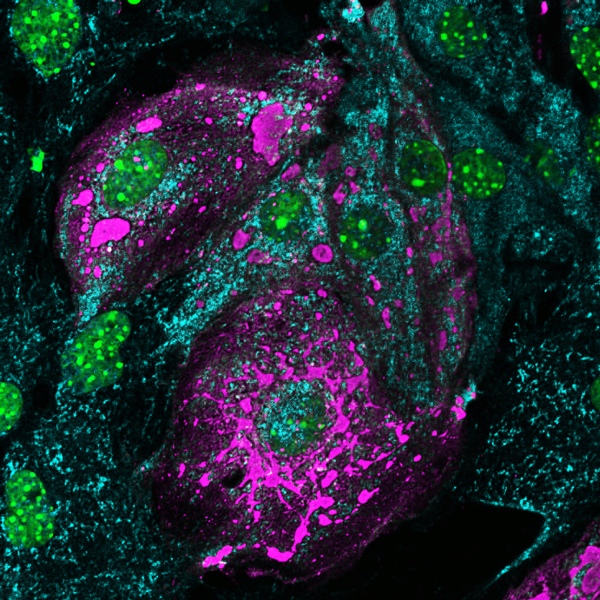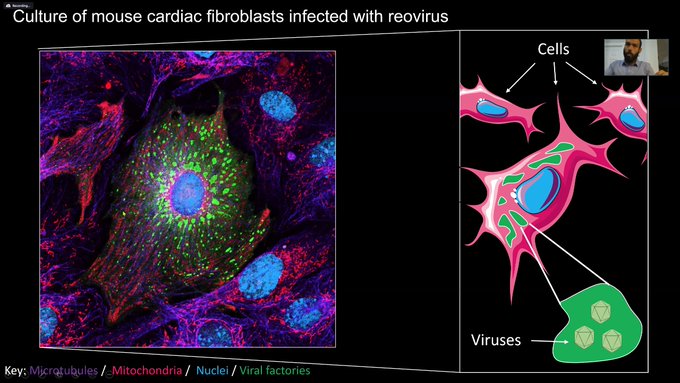Illuminating the Micro-World to Understand Viral Infections
By Fenella Saunders
Microscopy experiments demonstrate how a virus finds a target cell and how cells respond to stop the virus, revealing mechanisms to target for antiviral treatments.
October 31, 2020
From The Staff Biology Virology
On October 27, 2020, virologist and science communicator Efra Rivera-Serrano gave this virtual talk for American Scientist’s lunchtime seminar series. He was introduced by Brian Malow. A video of the full talk is below, followed by a summary of the live tweets that highlighted points of the talk.
As Rivera-Serrano explains, viruses are ubiquitous in nature and can be found freely disseminated in nearly every ecosystem and in intimate association with the cells they infect. Unable to multiply by division like all units of life do, these subcellular agents rely entirely on host cells as a source of both biomolecules and as a microenvironment suitable for their replication.

Images courtesy of Efrain Rivera-Serrano
Due to this extreme dependence on cellular factors, targeting viral infections with drugs that have minimal effects on the host has proven to be challenging. Rivera-Serrano details how the use of advanced microscopy tools has illuminated the understanding of infection dynamics and has revealed key steps by which viruses manipulate their host cell. These dynamics and key steps could be suitable for the development of antivirals. Rivera-Serrano’s presentation provides the basics of what happens when a virus finds a target cell and how our cells respond to stop the virus, and offers examples of how both infected and uninfected cells within a tissue can act in concert to orchestrate antiviral defenses critical for the outcome of a viral infection.

Courtesy of Efrain Rivera-Serrano
Rivera-Serrano (who tweets at @NakedCapsid) is a virologist and cell biologist who specializes in the use of advanced microscopy tools to visualize and understand the interplay between a virus and its host cell during an infection. He holds a bachelor’s degree in biology and chemistry from the Catholic University of Puerto Rico and a master’s degree in plant cell biology from North Carolina State University (NCSU). His doctoral training at NCSU focused on understanding how cardiac cells protect themselves against viral infections and how viruses counteract these responses to successfully replicate in the heart. Rivera-Serrano continued his virology training as a postdoctoral fellow at the University of North Carolina at Chapel Hill studying how the hepatitis A virus enters and is released from human cells; and later on, at the University of California, Davis, developing genetic tools to identify host genes important for viral replication. Rivera-Serrano is now moving from research into science communication, and works with American Scientist as social media specialist; he was invited by Science Communicators of North Carolina (a co-organizer of these events) to give this talk before he was affiliated with the magazine.

American Scientist Comments and Discussion
To discuss our articles or comment on them, please share them and tag American Scientist on social media platforms. Here are links to our profiles on Twitter, Facebook, and LinkedIn.
If we re-share your post, we will moderate comments/discussion following our comments policy.